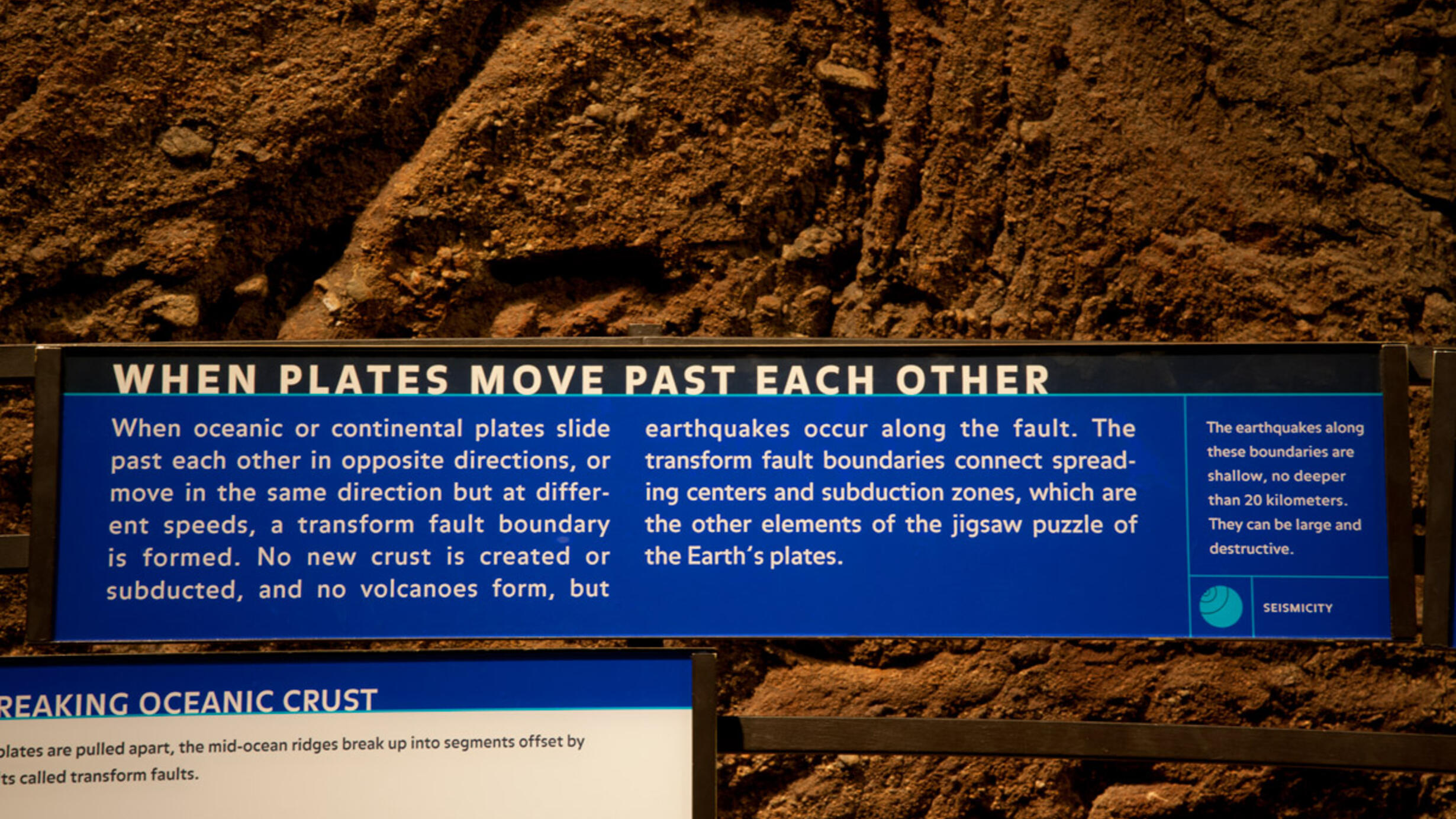When plates move past each other
Part of Hall of Planet Earth.
 AMNH/R.Mickens
AMNH/R.Mickens When oceanic or continental plates slide past each other in opposite directions, or move in the same direction but at different speeds, a transform fault boundary is formed. No new crust is created or subducted, and no volcanoes form, but earthquakes occur along the fault. The transform fault boundaries connect spreading centers and subduction zones, which are the other elements of the jigsaw puzzle of the Earth’s plates.
In This Section
Exhibit
Anza-Borrego
This strand of the San Andreas cuts through layers of sedimentary rock in the Anza-Borrego Desert in southern California.
Exhibit
Atlantis fracture zone
Deep-sea transform faults, such as the Atlantis, offset the mid-ocean ridges, breaking them up into segments.
Exhibit
San Andreas fault
The San Andreas is probably the best-known transform fault boundary.
Exhibit
Anatolian Fault, Turkey
The Anatolian transform fault system is probably the most active in the world.